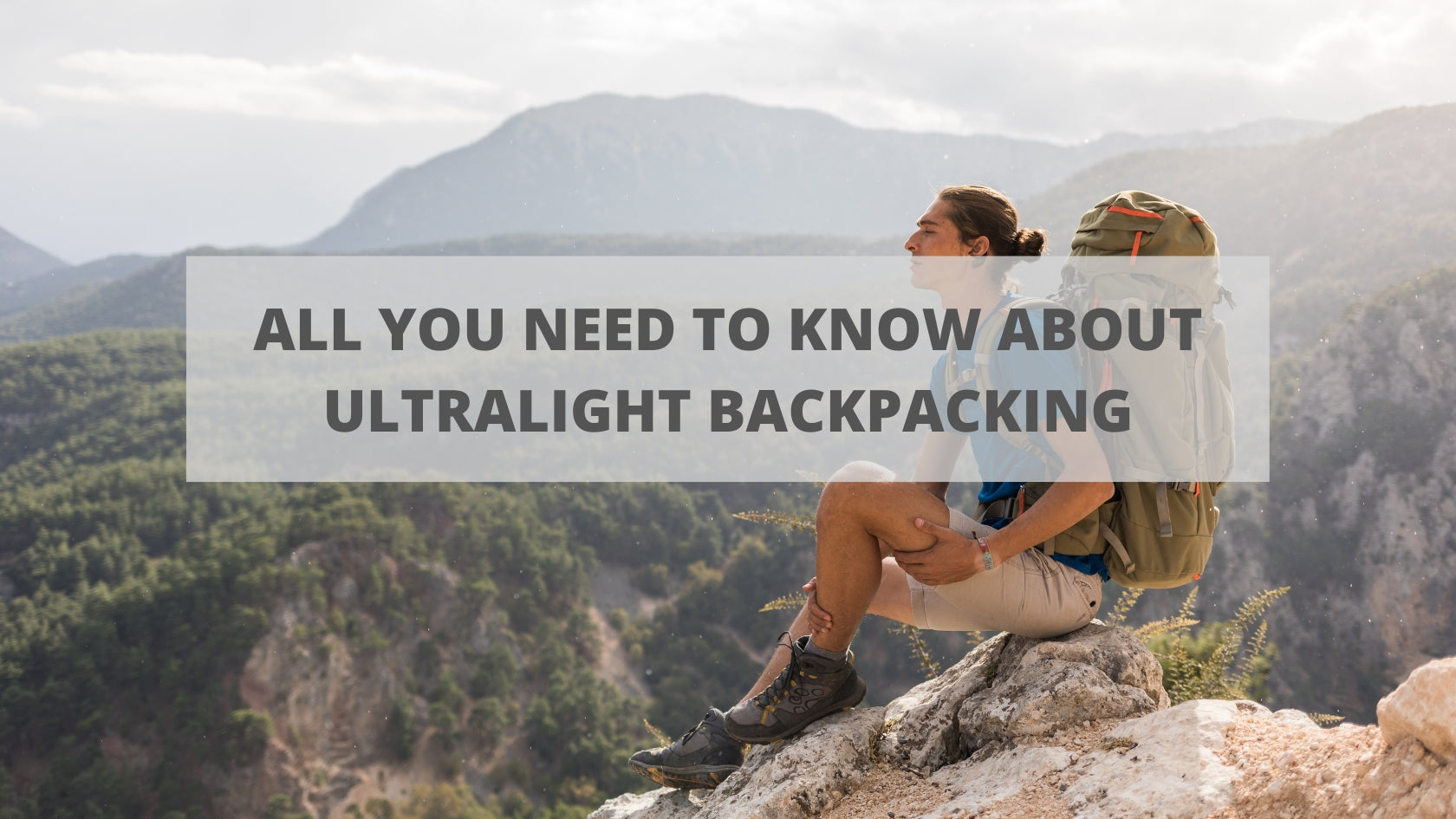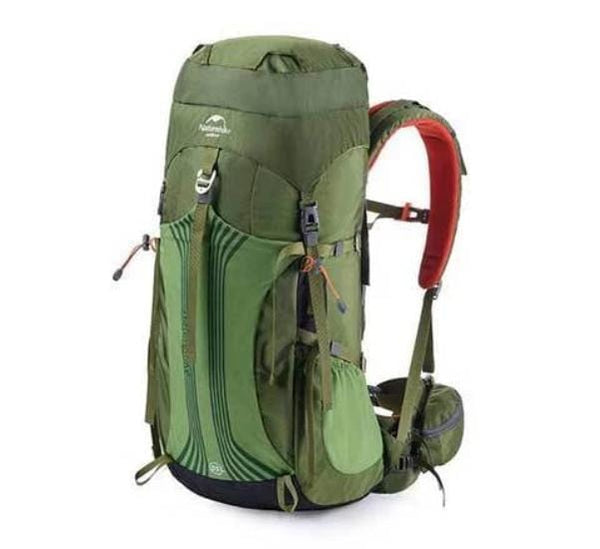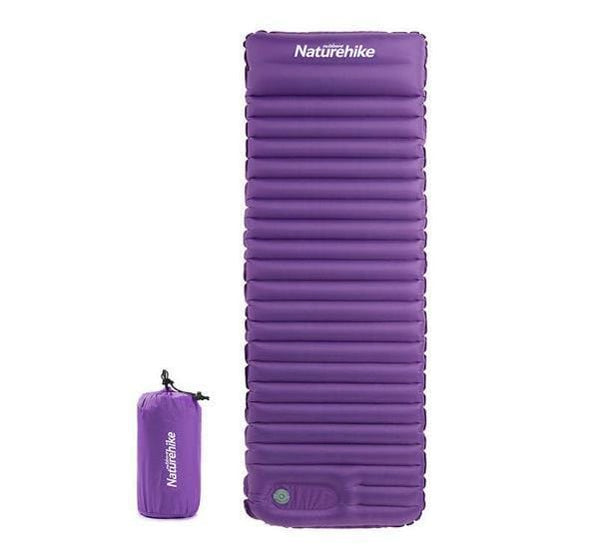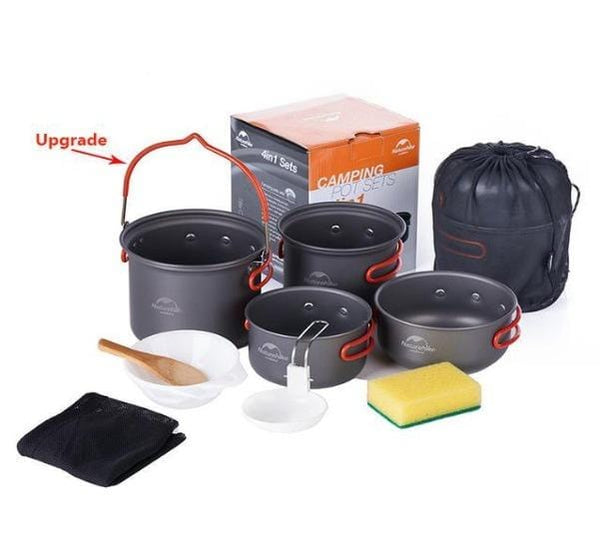- No products in the cart.

Camping is now made easy with the coming of ultralight backpacking—packing light gear to effectively ditch shoulder and back pains. This method may sound promising, but it takes a lot of patience, endurance, and a series of do and do not before you ace the packing. Nobody does it correctly during their first attempt, but we will make an exception for you as we will give you everything you need to know about ultralight backpacking.
But before we get into the specifics, let us debunk the science behind ultralight backpacking and why we should embrace it.
'The less you carry, the further you go 'sums up the idea of ultralight backpacking. The less weight you have on your shoulders, the less impact it has on your body. Ultralight backpacking is the subset of lightweight backpacking that emphasises bringing the lightest gear possible. If we are to differentiate the two, a lightweight backpacker is lugging a base weight of under 9 kg, while ultralight backpackers carry only half of it. It makes the lightweight packing even lighter. For campers with a penchant for relaxation and convenience, this should be the one you are practising to nail.
How to Determine the Pack Weight?
The secret to winning ultralight backpacking is, of course, knowing the weight of your essentials. If we do it the traditional way, we need to count everything to get the sum of the total weight. So instead, we will use the following steps to determine our backpacks' overall weight:
Base Weight
The base weight can make or break your ultralight backpacking journey. That is the most crucial part of packing since it affects everything, such as the tent and sleeping bag. Although there is no golden rule that every hiker needs to follow since we all have different needs, nevertheless, as an ultralight backpacker, you should aim for weight at least 4.5 kg for the base weight.
Worn Weight
As the name implies, this will be everything you will wear, including a shirt, pants, socks, underwear, boots, hats, and even sunglasses. If you want to keep things light, avoid bringing excessive clothes you will not wear. Also, it is best to plan to prevent items incompatible with the trip, such as getting a parka to sunny terrain. Aside from it is heavy, it also occupies much space in the bag.
Consumable Weight
Consumable weight is about the consumable items we need to tag along with us, like food, water, and fuel. Getting enough nutrients to fuel our body for the day ahead is vital, but we must also keep in mind to pack light. Enough food to energise our body but not too much to drain our body as well. Best if you plan a week or two before the trip about the food you need, such as a pack of energy bars, handy treats and a good source of sugar to keep your body active.
Tips for Starters
If you are new to ultralight backpacking, things can get overwhelming. To make your day lighter, we have rounded up the best ultralight hiking tips to get you started:
Well Planned is Half Done
Do not call yourself a backpacker if you do not have a plan. The first step in acing the ultralight backpacking is organising your thoughts and yourself. That means you must spare much time preparing for everything. From researching to managing your data and weighing your gear, everything should be laid down beforehand to ensure things work out fine. If this is your first time hiking, avoid choosing a strenuous location. Instead, go for a site with majestic views and a well-travelled trail since you are a newbie to the game. That will reduce the chances of getting lost in an unknown forest and be a good way to interact with other hikers. Who knows? You can meet new friends and exchange stories and information based on their experiences that you can save for your next trip.
We do not just go to a site and decide to spend the night there. In a month or two, start digging for facts about where you plan to camp. The more information you get, the better. It will help you determine your needs for the trip and weigh all your gear. Once you decide on all the items you might need, begin weighing them. Knowing each item's weight will let you prioritise the equipment you can place in your hiking backpack and remove any items that are not necessarily required.
Packing the Big Ones
Remember, our goal is to pack light. Therefore, our backpack, tent, sleeping mat, and sleeping bag should be lightweight — ultralightweight, rather.
Although this can be tricky, we can save enough space and weight if you ditch your old, rusty camping gear instead of switching to the new ones. In addition, tons of new hiking equipment are now designed to ease the burden of carrying heavy equipment when hiking.
For instance, ultralight backpacks are lighter compared with traditional ones. They may seem identical, but trust us when we say an ultralight pack is far superior to the conventional bag in carry load and design. A typical backpack weighs at least 3 kilos, while an ultralight backpack is only half its weight and should withstand at least 40 to 45 litres of carry load.
Even ultralight tents now have a modern twist by being compact and lightweight. Suppose traditional tents used to weigh around 3 kilos and more. In that case, a one-person ultra-lightweight tent is usually approximately 1.35 kilos or even less, depending on the store you will be getting it. Moreover, it is already a double-walled tent ideal for braving extreme weather. A snatch that your shoulders will thank you for. Speaking of which, if you plan on pitching your tent in stormy or wintery weather, do not forget to tote a sleeping bag and mat. Though these are needed in every hike, unique sleeping bags and mats are designed to shelter you during the cold season. We will talk more about it in another article, but here, look for the lightweight ones that give optimal warmth for insulation from the frozen ground. As for the mats, you can choose between air pads and foam pads. Choose the one that suits your taste better. If you want a more accessible pack and lighter, air pads are the way to go. But if you are into functionality, foam pads are the obvious choice. It all boils down to your preference for comfort and warmth.
Do Not Go Overboard With Your Food and Drinks
Sure, we do not want to wander with an empty stomach. Likewise, we also do not want to fill our bags with food alone. In ultralight backpacking, if you plan to camp for three days, bring only food sufficient for a 3-day hike. We understand you are scared to go hungry in the woods, but you should also consider the consequences of going overboard. Consider the calorie-to-weight ratio to ensure you get enough nutrients for the day but will not take up much weight in your bag.
Shop for nuts, dried fruits, chocolate and peanut butter to manage your blood sugar levels and bodybuilding, giving you an additional energy boost. As much as possible, avoid bringing canned goods, which are often heavy and low in calories.
If you are scared to go hungry, you better be worried about dehydration. Staying hydrated is essential, especially during long walks. Unfortunately, bringing adequate water during your hike is a heavy task. However, we can eschew this by scouting a site near water streams. In addition, it would be nice to acquire a foldable bucket to fill with water. It is ideal as compared with regular buckets that are often bulky.
Cooking the Ultralight Way
Enjoying a delightful and savoury meal is the best way to reward yourself after a long day of trekking. But, doing it the ultralight way, we need to tag along camping cookware designed to be compact and handy. So leave your kitchenware at home. Instead, bring a lightweight stove, a foldable gas burner, a camping pot, and some camping cutlery are what you need. Most camping pots usually come in sets nestled together to save space and weigh less compared to the traditional.
What Should You Wear?
Seasoned ultralight backpackers do not usually bring different clothes during their hike. However, since it is your first time, you may feel uncomfortable wearing the same outfit for a multiday walk. Still, the best thing to do is to plan.
What season will you hike? If you trek in the summer, you do not need a base layer to keep you warm. For your shirt, a short sleeve would be excellent for staying calm, but if you want to avoid the sun's heat and keep the bugs away, a long sleeve is ideal, but be sure that these are made from synthetic material for better absorption and movement. Your hiking pants should also be lightweight, and training shorts are best for warmer weather. If you plan to wear a jacket, choose a thin waterproof material to protect you from the wind, while for your shoes, a pair of durable and lightweight trail shoes would be enough. Lastly, bring at least three pairs of underwear made from synthetic materials since this one dries faster if you wash it in nearby rivers and streams.
Other Must-Have Items
Remember to bring a first aid kit, a navigation system, a safety whistle, sunscreen, a lightweight headlamp, hygiene kits, and trekking poles apart from your tent, sleeping bags, cookware, and clothes. Light aluminium trekking poles will help you balance and navigate steep terrain.
Noteworthy Tricks When Going Ultralight Backpacking
Here are some other tricks that will help you cut back excess weight:
1. Choose Items with Multiple Uses
To cut some weight, look for items with a legion of purposes. For example, a foldable bucket can refill your water tumbler. At the same time, you can use it for storing items or a wash bucket for cleaning your cookware.
2. Eliminate the Non-Essentials
Please think twice before you put it inside your bag. Do you need it in the woods? If the answer is "not really, "do not bring it. That will cut back unnecessary weight.
3. Say No to "Extras."
As much as possible, limit bringing extra pairs of the stuff you need, such as clothes and cookware. Decide how many days you will stay on the site to know the number of clothes you will only need. For cooking, a single portable pot is enough for two people. If it is a collapsable cookware with three pots nestled in one, it is good to go as long as it is lightweight and compact.
4. Divide the Stuff Equally
If you are hiking with a buddy, share the load with them. For instance, let us say you bring the tent while the others get the cookware and other gear so it will lighten up your backpacks.
5. DO NOT BRING COTTON
Please avoid bringing cotton clothes, except for a bandana that you can use as headwear, coffee filter, and hot hand for your pot. Instead, go for synthetic materials, which are accessible to dry and lightweight.
6. Limit Your Electronic Devices
You are one with nature. So, for once, bring down your gadgets and enjoy the scenic views of the place. Just bring a phone, an extra battery, and a GPS. If you worry about your safety, tell your loved ones where you will be hiking and your expected return date before going on the trail.
7. Curtail the Weight of the Big Three
What are the big three? Tent, sleeping bag, and backpack. These are usually the ones with the heaviest weight. Invest in lightweight yet made from sturdy materials to give you everything you need during your hike. Choose those built without a thick frame for the backpack, as this only adds weight to your shoulder. Meanwhile, search for tents under 2 kilograms, designed for the weather of your trip, to ensure they will shield you against the environment at night without forcing your back to carry a heavy load.
Conclusion
It takes a lot of time and preparation before you master ultralight backpacking. But given all the tips and tricks we have rounded up in this article, it will be a breeze for you. So always think out of the box, plan for everything you need or might encounter along the journey, and follow our tips to make your hiking trip a fun and memorable experience.















